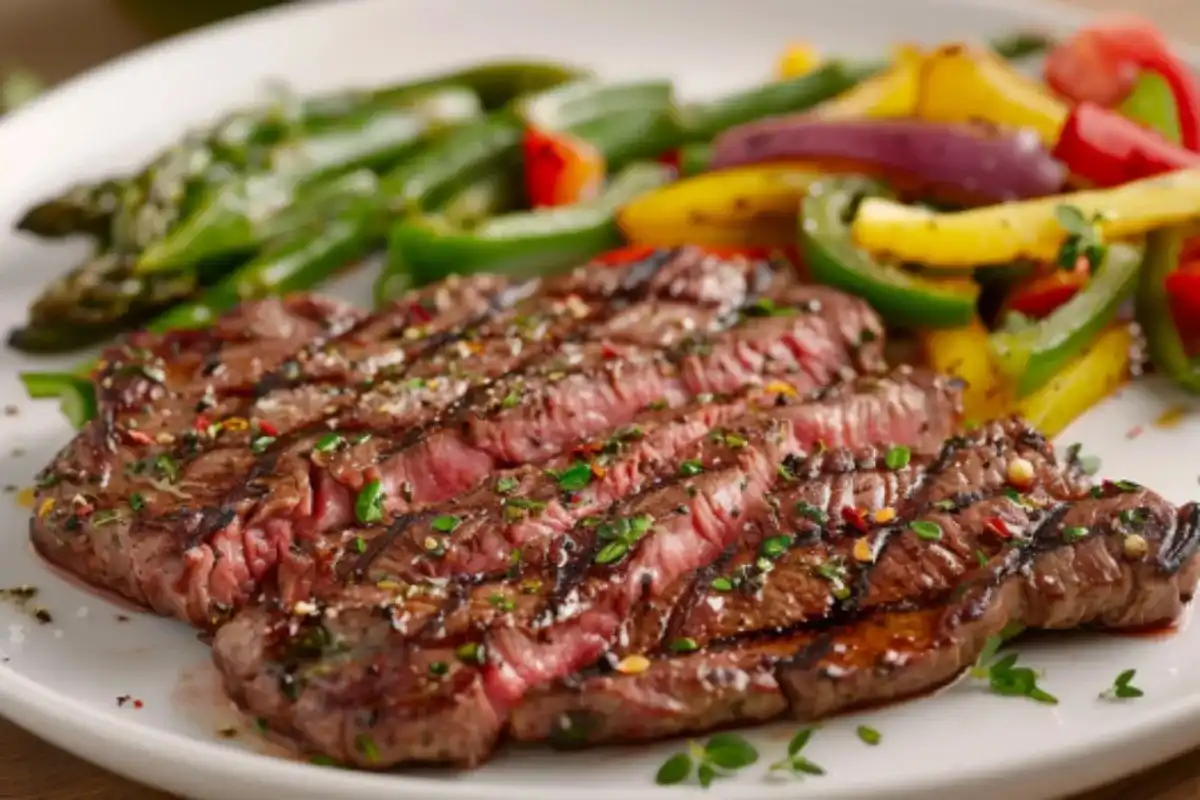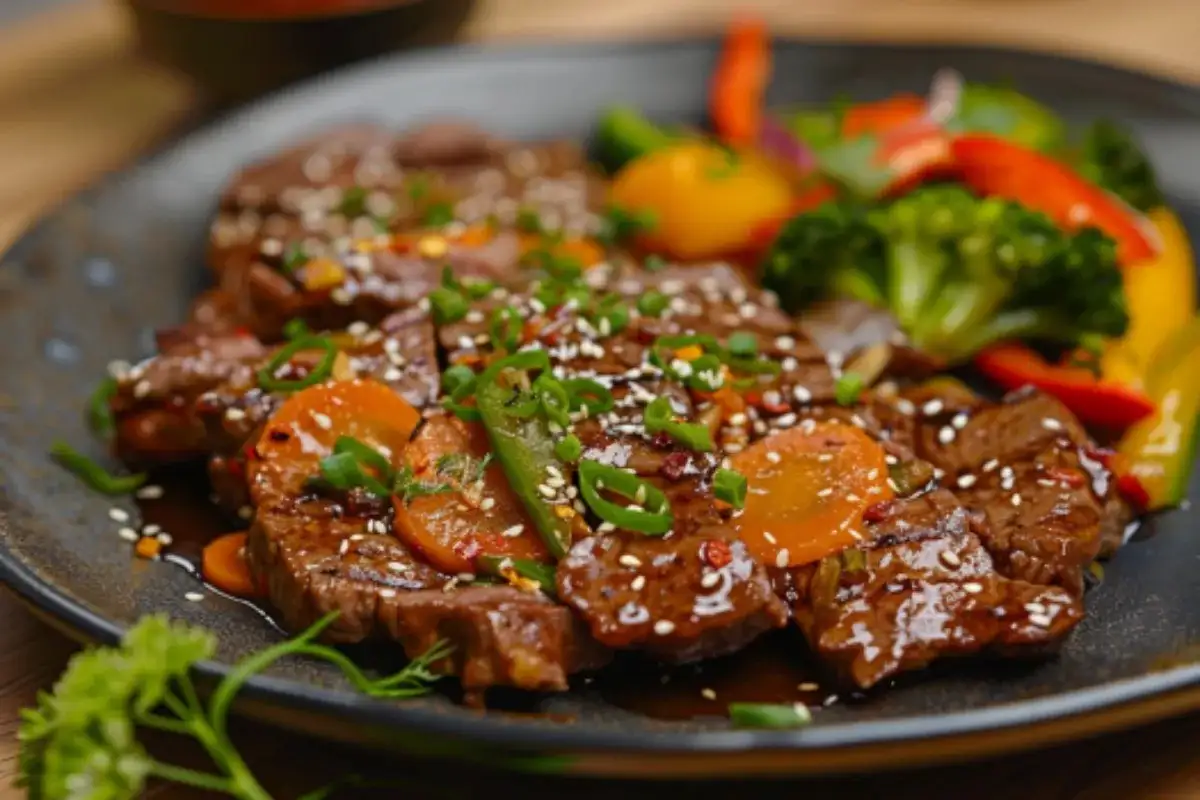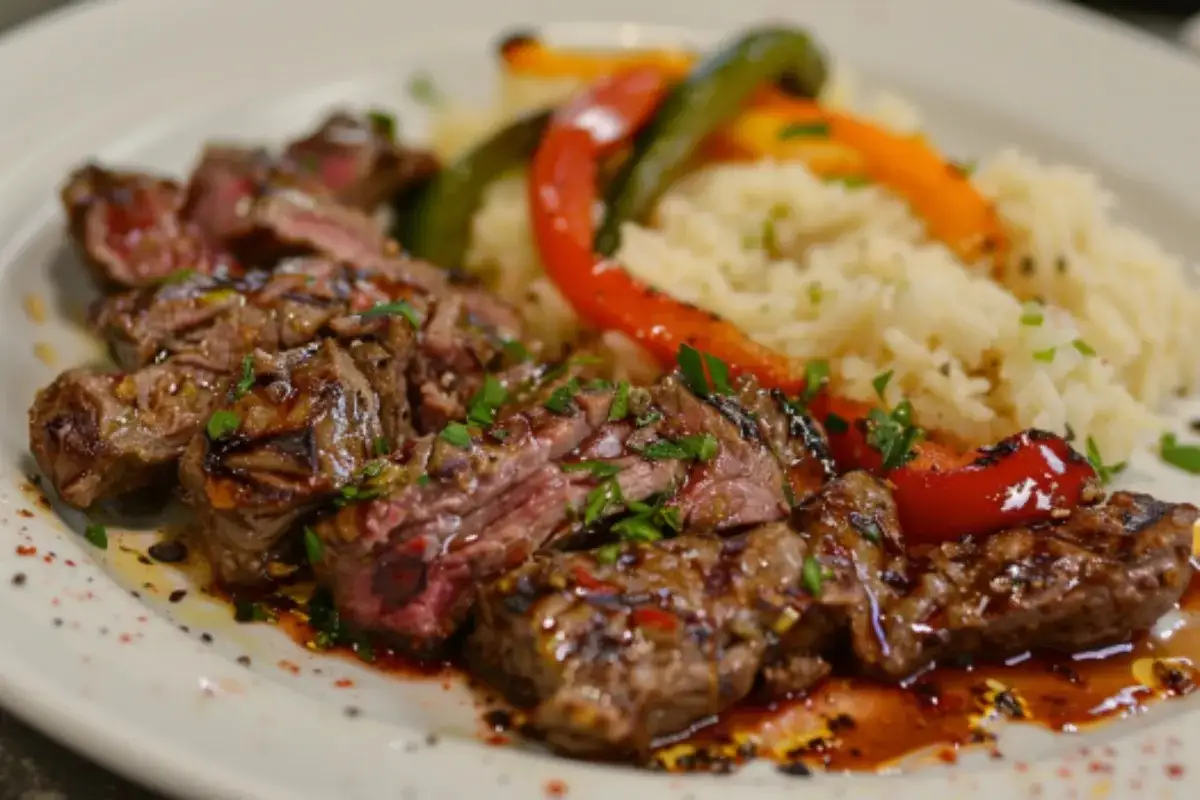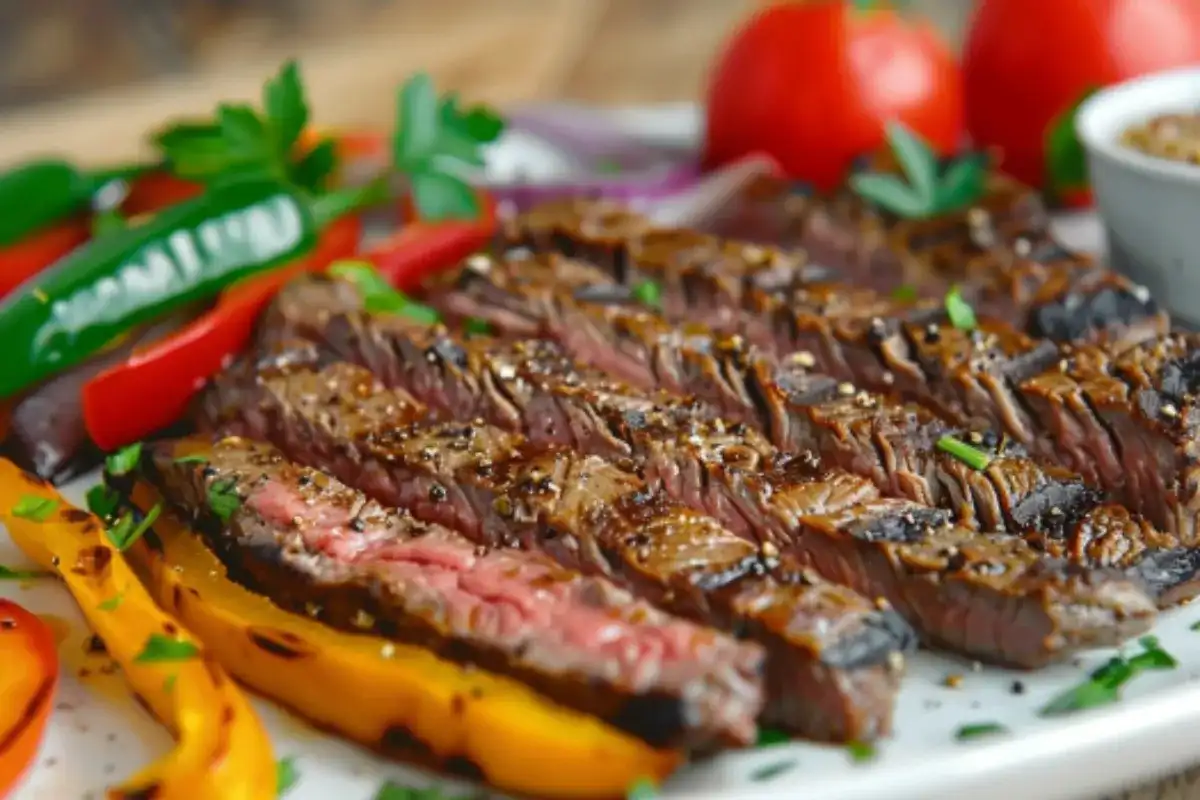Pepper steak is a savory and satisfying dish loved by many, but sometimes the steak turns out tough and chewy, leaving you frustrated. When this happens, it takes away from the delightful flavors of the dish and makes the dining experience less enjoyable. Tenderness is the hallmark of a well-prepared pepper steak, so if you’ve ever wondered, “Why is my pepper steak tough?” this article is here to answer your questions. By understanding the science behind meat preparation, proper cooking techniques, and common mistakes, you can prevent tough pepper steak in the future.
This in-depth guide covers all the essential aspects of why your pepper steak might be tough and, most importantly, how to make sure it never happens again. Let’s explore the possible reasons for tough pepper steak and learn how to prepare this dish perfectly every time.
Common Reasons Why Your Pepper Steak is Tough

1. Overcooking the Steak: The Top Reason Why Pepper Steak is Tough
Overcooking is one of the most common reasons your pepper steak might turn out tough. When meat is cooked for too long or at too high a temperature, the muscle fibers contract tightly, squeezing out moisture. This leaves the steak dry, stringy, and chewy. Understanding the science of overcooking is crucial to preventing it.
Here’s what happens: as the temperature of the steak rises above its ideal doneness, the proteins in the muscle fibers coagulate, causing them to shrink. This is especially problematic in lean cuts of meat, which contain less fat to counteract the dryness. Fat contributes to the juiciness of the steak, and when moisture evaporates, all that’s left is tough muscle tissue.
How to Avoid Overcooking:
- Use a meat thermometer: A digital meat thermometer is one of the simplest and most effective tools in the kitchen. Check the internal temperature to make sure your steak isn’t overcooked. For pepper steak, a medium-rare doneness (about 130°F to 135°F) is usually ideal.
- Be mindful of carryover cooking: Once you remove your steak from the heat, the internal temperature will continue to rise slightly due to residual heat. Account for this when checking for doneness, especially with thinly sliced steaks used in stir-fries.
- Cook over high heat for a short time: Pepper steak is often stir-fried, and the key to tender results is using high heat to quickly sear the steak, locking in the juices while preventing overcooking. This technique is widely used in Asian cooking and is perfect for pepper steak preparation.
If you want more insight into how overcooking affects meat textures, check out this guide on cooking halibut without drying it out. While it’s about halibut, the principles apply to steak as well.
2. Using the Wrong Cut of Meat: How It Leads to Tough Pepper Steak
The cut of meat you use for pepper steak has a major impact on its texture. Some cuts are naturally tougher than others and require different cooking methods to achieve the best results. Tough cuts of meat, like round steak or sirloin, have more connective tissue, which means they need longer cooking times and special preparation techniques to become tender.
Choosing the Right Cut:
- Flank steak is one of the best cuts for pepper steak because it is tender and flavorful. Flank steak is lean with long, thin muscle fibers, which makes it ideal for quick cooking methods like stir-frying.
- Ribeye steak is another excellent option if you prefer a fattier cut. The marbling in ribeye steak makes it juicy and flavorful, but it’s also more forgiving in terms of cooking time, so it’s less likely to become tough.
- Sirloin tip is often used in pepper steak recipes. While it’s leaner than ribeye, it can still be tender if cooked properly. Marinating and quick, high-heat cooking methods work best with this cut.
Remember, tougher cuts like round steak or chuck roast are better suited for slow-cooking methods like braising or stewing, where the connective tissues have time to break down. If you want to dive deeper into choosing the best cuts of meat for pepper steak, this guide on steak cuts for pepper steak provides a great overview.
3. Cutting the Meat Incorrectly: Preventing Toughness in Pepper Steak
Cutting your steak correctly can make or break the tenderness of your pepper steak. Even if you’ve chosen a tender cut of meat and cooked it perfectly, cutting it the wrong way can leave you with a tough texture.
Why Cutting Across the Grain is Essential:
Meat is made up of long muscle fibers that run parallel to each other. These fibers can be quite chewy when left intact, but slicing across them shortens the fibers, making the meat easier to chew. When you cut across the grain, you essentially break up the muscle fibers, which helps create a tender bite.
- Identify the grain: Before cutting your steak, look at the surface of the meat to find the direction of the muscle fibers (the grain). Once you’ve identified the grain, slice the steak perpendicular to those fibers.
- Slice thinly: When making pepper steak, thin slices are ideal. Thinly sliced steak cooks quickly and evenly, reducing the risk of toughness. Cutting the steak too thick can result in uneven cooking and a chewier texture.
How to Choose the Right Meat for Tender Pepper Steak

1. Best Cuts for Pepper Steak
The best cuts for pepper steak are those that are naturally tender and require minimal cooking to stay juicy and flavorful. Here are some of the top choices:
- Flank steak: A lean cut that’s packed with flavor, flank steak is ideal for stir-fries like pepper steak because it cooks quickly and remains tender when sliced thinly. It’s important to cut flank steak against the grain for the best results.
- Skirt steak: Another excellent option, skirt steak is thin, flavorful, and works well in high-heat cooking methods. It has more marbling than flank steak, which can add to the juiciness of the final dish.
- Tenderloin: This cut is the most tender of them all, but it’s also more expensive. If you’re looking to splurge, tenderloin (also known as filet mignon) will give you incredibly tender results, though it might not have the same bold flavor as flank or skirt steak.
2. Quality of the Meat
While choosing the right cut is important, the quality of the meat itself also matters. High-quality meat is generally more tender and flavorful. Here are some tips on choosing the best meat:
- Fresh is best: Whenever possible, buy fresh meat instead of frozen. Freezing can cause ice crystals to form in the meat, which can damage the muscle fibers and result in a tougher texture when cooked. Fresh meat has a better texture and retains more moisture.
- Look for marbling: Marbling refers to the thin streaks of fat that run through the muscle. This fat melts during cooking, adding moisture and flavor to the meat. Cuts with more marbling, like ribeye, are generally more tender and juicy.
- Consider the grade: In the U.S., beef is graded based on its quality. Prime-grade beef has the most marbling and is the highest quality, followed by Choice and Select. Prime beef will be the most tender, but it’s also the most expensive. Choice is a good middle ground for tender steak without breaking the bank.
The Importance of Marination
Marinating your steak before cooking is one of the best ways to ensure it turns out tender and flavorful. Marinades work by breaking down the muscle fibers in the meat, allowing flavors to penetrate deeper and making the steak more tender. Here’s how to get the most out of your marinade.
1. How Marinades Work
Marinades typically contain three main components: an acid, an oil, and seasonings. Each of these components plays a role in tenderizing and flavoring the steak.
- Acidic ingredients: Acids like vinegar, lemon juice, or soy sauce break down the proteins in the meat, making it more tender. However, too much acid or marinating for too long can actually have the opposite effect, making the meat mushy.
- Oil: The oil in the marinade helps to carry fat-soluble flavors into the meat. It also creates a barrier that locks in moisture during cooking, preventing the steak from drying out.
- Seasonings: Herbs, spices, garlic, and other seasonings add flavor to the meat. You can customize your marinade depending on the flavors you want to highlight in your pepper steak.
A great marinade for pepper steak might include soy sauce, garlic, ginger, and a splash of rice vinegar for a savory and slightly tangy flavor. You can also experiment with different marinades based on your flavor preferences. For more ideas, check out this guide on pepper steak sauce ingredients.
2. Optimal Marination Time
Timing is crucial when it comes to marinating. If you marinate for too short a time, the flavors won’t penetrate deeply enough. But if you leave the meat in the marinade for too long, the acid can break down the proteins too much, leading to a mushy texture.
- For pepper steak, 30 minutes to 2 hours is ideal. This gives the marinade enough time to tenderize the meat without going overboard.
- Avoid overnight marinating unless you’re using a very mild marinade with little acid. Extended marination can result in a texture that’s too soft.
Proper Cooking Techniques
Cooking pepper steak correctly is essential to keeping the meat tender. The method you use, the temperature of the pan, and even how you prep the steak before cooking all play a role in the final texture.
1. Prepping the Meat
Before you cook your steak, there are a few important steps to take:
- Pat the meat dry: After marinating, use paper towels to pat the steak dry. Excess moisture on the surface of the meat will prevent it from searing properly, which can affect the texture and flavor. A good sear locks in juices and enhances the steak’s flavor.
- Season it properly: While marinades add a lot of flavor, you’ll still want to season the steak just before cooking. A sprinkle of salt and pepper on both sides helps to bring out the natural flavors of the meat and adds a bit of crust when seared.
2. The Importance of High Heat
When making pepper steak, high heat is your friend. High heat creates a flavorful crust on the outside of the steak while keeping the inside tender and juicy. This is especially important in stir-fry recipes where the meat needs to cook quickly to avoid drying out.
- Use a heavy skillet or wok: A cast-iron skillet or wok is perfect for cooking pepper steak because it holds heat well and allows you to achieve a nice sear. Preheat your pan before adding the meat to ensure the temperature is high enough.
- Work in batches: If you’re cooking a lot of steak at once, avoid overcrowding the pan. Overcrowding lowers the temperature of the pan, which leads to steaming rather than searing. Cook the steak in batches to ensure each piece gets a good sear.
3. Cooking in Batches
Cooking in small batches ensures that the meat sears rather than steams. If too much meat is added to the pan at once, the temperature will drop, and the steak will release moisture, leading to a tough texture.
- Sear the steak in a single layer: Make sure each piece of steak is in contact with the hot surface of the pan. If you need to, cook the steak in several batches, removing the cooked pieces to a plate and covering them with foil to keep warm while you finish the rest.
4. Resting the Meat
After cooking, it’s important to let your steak rest before slicing into it. Resting allows the juices to redistribute throughout the meat, resulting in a juicier and more tender bite.
- Let the steak rest for 5 to 10 minutes before slicing. During this time, the internal temperature will continue to rise slightly, and the juices will settle.
- Slice against the grain to ensure the steak remains tender when served.
How to Fix Tough Pepper Steak

Even if your steak turns out tougher than expected, there are still ways to salvage it. Here are a few tips to help fix tough pepper steak:
1. If Your Steak is Already Tough
If you’ve already cooked your pepper steak and it turned out tough, don’t panic. There are still a few things you can do to improve its texture:
- Thinly slice the steak: The thinner the slices, the less noticeable the toughness will be. Even a tough piece of meat can be more enjoyable if it’s sliced thinly enough.
- Add moisture: Serve the steak with a flavorful sauce or gravy to add moisture and soften the meat. You can also toss the steak back into the pan with a little broth or sauce and let it simmer gently for a few minutes to rehydrate it.
2. Tenderizing Methods Before Cooking
To avoid tough steak in the future, consider using a few simple tenderizing methods before cooking:
- Mechanical tenderizing: Using a meat mallet to pound the steak can help break down tough muscle fibers, making the steak more tender.
- Use a tenderizing marinade: Marinades that contain enzymes, like those from pineapple or papaya, are particularly effective at tenderizing meat. These natural enzymes help break down proteins, resulting in a more tender steak.
If you’re looking for more tips on how to tenderize steak or prevent it from becoming tough, this guide on why Chinese pepper steak is so tender offers valuable insights.
Frequently Asked Questions
Why is my pepper steak tough?
Your pepper steak might be tough for a variety of reasons, including overcooking, using the wrong cut of meat, or not cutting the steak correctly. Understanding these factors and using the right techniques will help you achieve tender steak every time.
How can I tenderize tough steak?
You can tenderize tough steak by using a marinade with acidic ingredients, slicing the steak against the grain, and using proper cooking techniques like high-heat searing.
How long should I marinate pepper steak?
Marinate pepper steak for at least 30 minutes and no longer than 2 hours to avoid an overly soft texture. This timeframe allows the marinade to tenderize the meat without breaking down the proteins too much.
What is the best cut of beef for pepper steak?
Flank steak, ribeye, and skirt steak are some of the best cuts for pepper steak. These cuts are tender, flavorful, and work well in stir-fry dishes like pepper steak.
Can I fix overcooked steak?
Yes, you can try to fix overcooked steak by slicing it thinly and serving it with a sauce or gravy. You can also reheat it gently in a little broth to add moisture back into the meat.
Conclusion
Making perfect pepper steak comes down to using the right techniques, choosing the right cut of meat, and cooking with precision. By understanding the factors that contribute to tough steak such as overcooking, using tough cuts, or improper slicing you can prevent these mistakes and enjoy a tender, flavorful dish every time.
Take the time to marinate your steak, use high heat for searing, and always let the steak rest before slicing. These small steps will make a big difference in the final texture and flavor of your pepper steak. With these tips and tricks, you’ll never have to ask, “Why is my pepper steak tough?” again!

